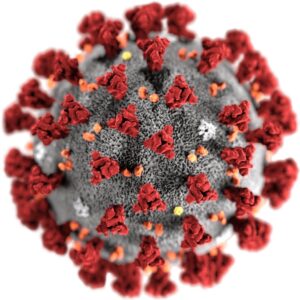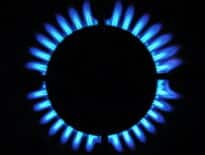
An illustration of the new coronavirus that causes the disease COVID-19. Image courtesy of the Centers for Disease Control.
China’s massive travel restrictions, house-to-house checks, huge isolation wards and lockdowns of entire cities bought the world valuable time to prepare for the global spread of the new coronavirus, now called COVID-19.
But with troubling outbreaks now emerging in Italy, South Korea and Iran, and U.S. health officials warning Tuesday it’s inevitable it will spread more widely in America, the question is: Did the world use that time wisely and is it ready for a potential pandemic?
“It’s not so much a question of if this will happen anymore, but rather more a question of exactly when this will happen – and how many people in this country will have severe illness,” said Dr. Nancy Messonnier of the U.S. Centers for Disease Control and Prevention.
Some countries are putting price caps on face masks to combat price gouging, while others are using loudspeakers on trucks to keep residents informed. In the United States and many other nations, public health officials are turning to guidelines written for pandemic flu and discussing the possibility of school closures, telecommuting and canceling events.
In an indication of the challenges, Health and Human Services Secretary Alex Azar said the government currently has stockpiled 30 million special N95 respirator masks but 300 million would be needed to protect health care workers in an outbreak.
Azar told senators that U.S. cases currently total 57. That includes 14 who either traveled to China or were close relatives of travelers; three Americans repatriated from Wuhan, the epicenter of the outbreak in China; and 40 passengers returned home from the cruise ship Diamond Princess.
“The immediate risk to the general American public remains low, but that has the potential to change quickly,” he said.
Will U.S. Take Economic Hit?
Coronavirus fears were credited with causing a 2,000-plus-point drop in the Dow Jones Industrial Average since Monday before markets stabilized Tuesday morning, jumping up by 300 points.
The quickly spreading virus has slammed the economy of China, where the virus originated, and caseloads are rapidly increasing in countries such as South Korea, Iran and Italy. More than 80,000 people around the world have been infected, with more than 2,500 deaths, mostly in China.
Raphael Bostic, head of the Fed’s Atlanta regional bank, said Friday that he expected the coronavirus to “be a short-time hit; we’ll get the economy back to its usual level” after the adverse effects pass.
The U.S. economy still looks resilient, growing at a solid 2.1 percent annual rate the last three months of 2019. American consumers are driving the record-breaking expansion, now in its 11th year.
Business investment has been weak, partly because President Donald Trump’s trade wars have generated uncertainty about where companies should locate factories and buy supplies. Investment could get weaker if the virus continues to disrupt the supply chains American businesses rely on.
How Prepared Are Hospitals?
In the U.S., hospitals and emergency workers for years have practiced for a possible deadly, fast-spreading flu. Those drills helped the first hospitals to treat U.S. patients suffering from COVID-19, the disease caused by the virus.
Other hospitals are paying attention. The CDC has been talking to the American Hospital Association, which in turn communicates coronavirus news daily to its nearly 5,000 member hospitals. Hospitals are reviewing infection control measures, considering using telemedicine to keep potentially infectious patients from making unnecessary trips to the hospital and conserving dwindling supplies of masks and gloves.
What’s more, the CDC has held 17 different calls reaching more than 11,000 companies and organizations, including stadiums, universities, faith leaders, retailers and large corporations. U.S. health authorities are talking to city, county and state health departments about being ready to cancel mass gathering events, close schools and take other steps.
The CDC’s Messonnier said Tuesday she had contacted her children’s school district to ask about plans for using internet-based education should schools need to close temporarily, as some did in 2009 during an outbreak of H1N1 flu. She encouraged American parents to do the same, and to ask their employers whether they’ll be able to work from home.
“We want to make sure the American public is prepared,” Messonnier said.
“It depends on caseload and location. I would suspect most hospitals are prepared to handle one to two cases, but if there is ongoing local transmission with many cases, most are likely not prepared just yet for a surge of patients and the ‘worried well,’” Dr. Jennifer Lighter, a pediatric infectious diseases specialist at NYU Langone in New York, said in an email.
In the U.S., a vaccine candidate is inching closer to first-step safety studies in people, as Cambridge-based Moderna Inc. has delivered test doses to the U.S. National Institutes of Health. Some other companies say they have candidates that could begin testing in a few months. Still, even if those first safety studies show no red flags, specialists believe it would take at least a year to have something ready for widespread use. That’s longer than it took in 2009, during the H1N1 flu pandemic – because that time around, scientists only had to adjust regular flu vaccines, not start from scratch.




 |
| 

